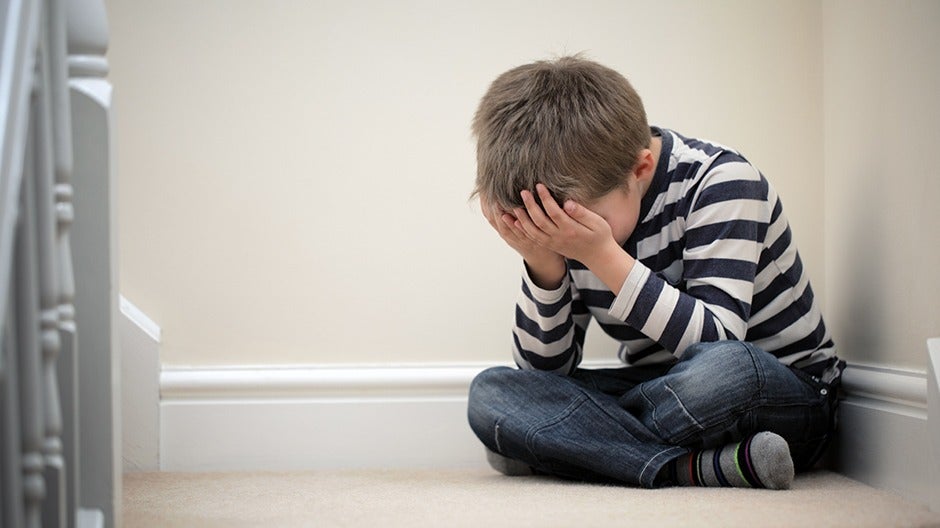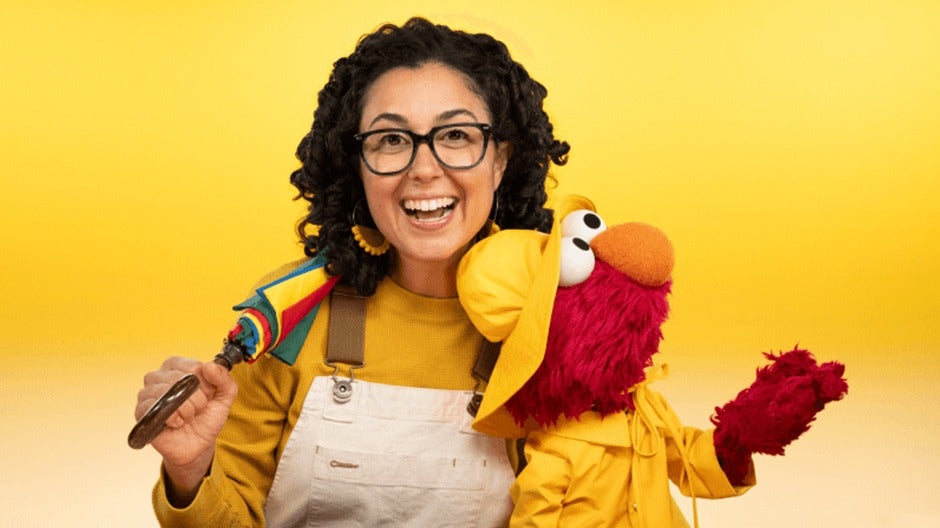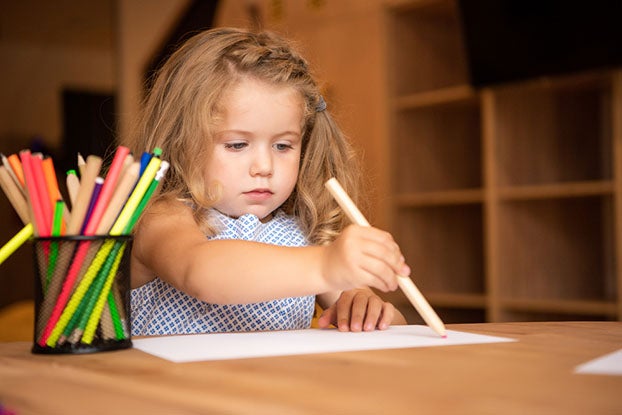Emotional regulation allows your child to adapt their response to a situation or environment. If a friend’s birthday party gets canceled, they might feel disappointed but not distraught. Or if a classmate hits them by accident with a ball in gym class, they might get upset but not furious.
Kids don’t come into the world knowing how to modify their emotions. However, through activities and exercises, they can learn to transform their initial feelings by focusing their thinking and acting with intention.
Learning how to emotionally regulate builds your child’s self-esteem and social skills—and there are many ways you can help!
The Short Cut
- Learning to regulate emotions is an important aspect of building Character, one of the 5 C’s at the heart of the Begin Approach to helping kids thrive in school and life.
- Emotional regulation skills can be taught and deepened over time
- Kids who can regulate their emotions have healthier self-esteem and do better in school
- Parents can help with at-home self-regulation activities and techniques
- A learning membership that grows with your child can also help them develop social-emotional skills and other essential aspects of Character
What Is Emotional Regulation?

Emotional regulation is a child’s ability to manage or regulate their emotions based on a situation, environment, or interaction.
Imagine your child’s emotions are like a lamp. The job of emotional regulation is to keep the room well-lit. If the sun is shining, you might dim the lamp or even turn it off. When night falls, you turn the lamp on to its brightest setting.
Similarly, when a situation is making your child overexcited, emotional regulation helps them turn down the intensity of those emotions.
If a situation is making them feel low, it helps them bring their emotions back up again.
First Steps in Regulating Emotions
1. Recognizing Emotions
Identifying emotions is the first step in learning to regulate them. When your child first experiences an emotion, they may not understand what they’re feeling.
You can help by giving them feedback. “It seems like you’re feeling scared about the sound of the thunder.”
This will give your child the language they need to name their emotions when they feel them again in a different context. If they remember how they felt when they heard thunder, they can say, “Mommy, I’m feeling scared,” the next time they feel the same way.
Being able to recognize and name their feelings prepares them for being able to respond to them.
2. Matching Feelings with Body Sensations
You can also help your child learn how their body feels when they experience an emotion.
When you can tell they’re feeling something strongly, ask them some questions to help locate specific sensations: “You seem scared. Can you point to where you feel it in your body? Does it feel like a jumpy tummy?”
Kids may find it easier to name how their bodies are feeling, such as butterflies in their tummy or a fast heartbeat, than to name the feeling itself.
Learning to pay attention in this way can help your child identify their feelings based on their physical experience.
This is especially useful if your child gets dysregulated quickly. Recognizing body sensations helps identify the early signs of strong emotions.
The sooner your child understands what they’re feeling, the easier it will be for them to find a sense of calm.
9 Emotional Regulation Activities for Kids
1. Model Emotional Regulation
Our kids are always watching us, so we can transform almost any situation into an opportunity for learning. It doesn’t have to take a lot of time, either.
If you have big feelings and manage them in a way that your child can witness (“Wow, I’m feeling really frustrated right now. I’m going to take some deep breaths.”), over time, they’ll mimic those skills and learn to use them.
2. Breathing Exercises
Your child may not be used to thinking about their breathing. But paying attention to it and engaging in simple exercises to slow down their breathing can settle their body.
We’ve got a handful of great breathing exercises for you and your child to try. Here’s one to start with:
Ask them to put one hand on their belly and one on their chest. Then, have them pay attention as their chest and belly rise when they take a breath and fall when they let it out.
Teach them a breathing sequence: breathe in for four counts, hold their breath for two counts, and then breathe back out for six counts. After five total rounds of counted breathing, ask your child how they’re feeling.
3. Create a Relaxation Station
Transform a spot in your home into a calming space. Start with objects that inspire relaxation, like pillows, a cozy blanket, or a stuffed animal. Then try one or all of these other ideas:
- Put a lamp in the space, so you can keep the lighting dim
- Add a small speaker so you can play soothing music
- Add an item with a relaxing scent, like lavender
Your child can be part of the planning. What things do they associate with a sense of calm?
They can help arrange the space, too. Once they use the space a bunch of times, their body may automatically begin relaxing when they enter it.
4. Getting Out the Extra Energy
If your child is brimming with a big emotion, you may want to try preceding or even replacing a calming technique with an energy release session.
This can be super simple, like punching a pillow or squeezing a stress ball. It can also be going outside for a game of tag, racing around the block, or jump-roping as many times as they can.
Physical activity is positively connected to emotional regulation and educational outcomes.
A recent study at the University of Cambridge found that kids who engaged in more physical activity were more likely to have strong self-regulation skills—especially emotional regulation—and those skills influenced how well they did in school.
5. Mood Cards
Playing a simple mood matching game can be a fun way to help your child identify emotions.
Start by printing or cutting out images of people experiencing different emotions. (For example, find an image of a person with their hands clenched into fists and their lips pressed tightly together.)
Place the images into a bag or turn them over on a table. Have your child pick one card. Ask them:
- What emotion do you see?
- How do you know?
- Can you describe a time when you felt the same way?
- How did you handle the emotion?
- Could you have done anything different?
6. Emotional Charades
This is a fun and non-stressful way to role-play emotions.
To play, take turns acting out a feeling and seeing if others can guess it. Eliminating sounds and only focusing on identifying feelings through physical movements and gestures encourages your child to link their body and their emotions.
7. Mindfulness Activities for Emotional Balance
Once your child learns how to name their emotions, how do they create an internal environment that helps them thoughtfully choose their actions and reactions?
One great way is to practice mindfulness.
Mindfulness is about being aware of your feelings, your thoughts, and the sensory inputs affecting you right now.
You can also think of it as taking a kind and honest look at what you’re experiencing in the present.
Keep things simple as you begin to practice mindfulness with your child. Try thirty seconds of meditation or sitting for fifteen minutes drawing together.
There are many other great mindfulness activities for young children as well!
8. A Story to Slow Your Child’s Body Down
Another way to inspire your child to practice emotional regulation is to read about it in a book.
When characters in a story experience an emotional arc, your child can vicariously experience it too. As you read, ask your child questions about what they hear and what they see. Some great books that feature emotional regulation include:
Grumpy Monkey by Susanne Lang and Max Lang
The Many Colors of Harpreet Singh by Supriya Kelkar and Alea Marley
Invisible Things by Andy J. Pizza and Sophie Miller
I Am Okay to Feel by Karamo Brown and Jason “Rachel” Brown
The Color Monster by Anna Llenas
One Upside-Downy Day by Renée Kurilla
9. Color-Coding Emotions
Finally, a popular emotional regulation tool in schools is Zones of Regulation, which makes emotions more concrete for students by connecting them with colors:
- The RED zone: an extremely high level of emotion like terrified, enraged, or wildly excited
- The YELLOW zone: a heightened level of emotion like nervous, frustrated, antsy, or feeling silly
- The GREEN zone: a calm state like content, focused, and in a space where they can interact with other people and are able to learn
- The BLUE zone: a low level of emotional affect like fatigue or boredom
In a classroom, this tool creates a sort of shorthand language for kids to use as they navigate their day.
They might tell their teacher, “I feel like I’m in the red zone” and get some reminders about what they can do to move into yellow or green. They might spot a friend heading into the red zone and try to help them calm down.
Implementing this tool helps kids normalize the processes of emotional regulation and de-escalation, and you can use it at home as well.
Emotional Self-Regulation with Begin

Learning how to regulate emotions takes repetition and practice. Be patient. Try to help your child through each step with empathy. It can be tough!
At Begin, we make tools to help.
Our Learn with Sesame Street program, created together with Sesame Workshop, helps kids practice essential social and emotional skills—including emotional regulation. With the help of their Sesame Street friends, kids explore feelings, identify emotions, and more.













